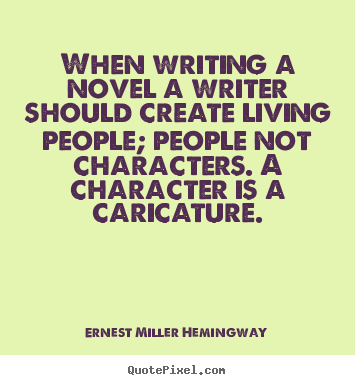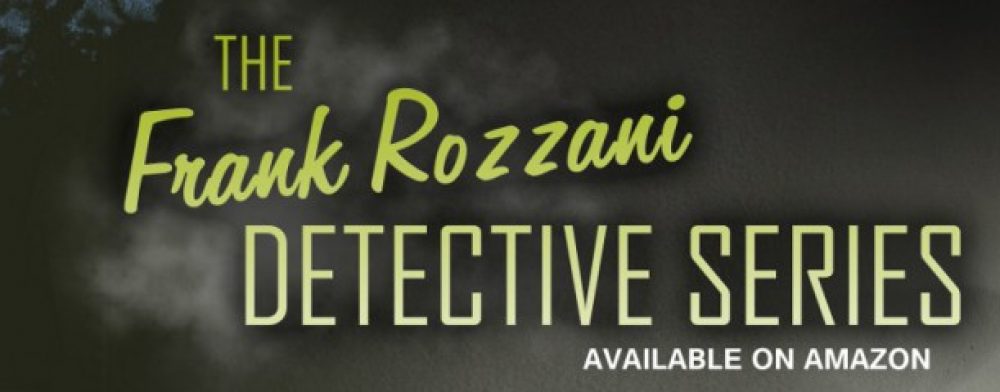This post is focused on a very important, if not the most important, aspect of your writers, your characters. Readers become invested in characters. They learn to love and/or hate characters. They sympathize and/or empathize with their flaws, quirks and events that shape them. Character development is both essential and difficult.
In this post, I hope to pull together some useful tips that I have tried to follow in my own writing or have learned from those that are respected and successful in the craft.

- Be consistent with what you call your characters – If you’re character’s name is John Doe, stick with calling him John or Mr. Doe or Johnny. But don’t alternate or you will confuse your readers. I actually broke this rule in my first book, Frankly Speaking, and in it’s subsequent related books, I have a character named Clifford Jones, III. He is an attorney, hacker, financial adviser and surf shop owner. His friends call him “Jonesy”, but he doesn’t let just anyone call him that. This means that, in dialogue where he is first meeting a character, they call him “Mr. Jones” until they earn enough of his trust, if ever, to call him “Jonesy”. It’s a minor bending of this principle and I’m good with it.
- Give your characters names with subtle meaning – If everyone in your book is named Mr. Smith or Mr. Doe, the reader may take this as a sign of bland writing. Of course, the other extreme is giving your characters ridiculous names. If your hero is named Stud Steelmucscle or something like that, your readers may not take you seriously. Of course, both of these rules have been broken. In the right context, that is perfectly fine. In my detective series, I gave my main character the name, Frank Rozzani. Rozzani is a name that is close to my own last name and fits in my ethnicity which allowed me to explore familiar territory in my storytelling. The name ‘Frank ‘ has become a double-edged sword as I have used it in the titles of the first five books: Frankly Speaking, Let Me Be Frank, Frank Incensed, Frankly, My Dear and Frank Immersed. Hopefully, I have not painted myself in a corner. I have at least 5-8 more ‘Frank’ titles in reserve. I just have to be story not to write the story to fit the title.
“You take people, you put them on a journey, you give them peril, you find out who they really are.”
― Joss Whedon
- Who the characters are – Some books go charging into action without establishing who the character is or why they’re taking the actions being described. This is a perfectly fine way to immerse your reader into a story, but don’t string them along for a long time without giving them little tidbits of information. You will lose them if your character seems reckless without cause.
- Stereotypes or stock characters – The terrorist of a certain ethnicity, the evil genius, the crusty old retired policeman; do they sound familiar? They should. They are often overused in what we read. Readers might think your story copying something they’ve read previously. That’s not to say that you can’t use some aspects of these characters, just don’t load your story with them.
- Too many characters – Some authors can pull this off. Read The Stand by Stephen King or The Lord of the Rings trilogy and you will have more characters than you can shake a stick at. These are exceptions. Too many characters means that you may not be developing them fully. You can try combining multiple characters or eliminating one or two. Not even Tom Bombadil made the movies.
- Extraneous characters – I know I’ve been guilty of introducing a character and then never using them again for the rest of the book. My editor will rip them out and remind me that they are not necessary. I sometimes have people ask me to write them into a book. In one instance I wrote someone into the book as the person in charge of conducting body cavity searches. I don’t get that request much any more.
This post told you about some of the problems of characterization. How do we fix them? I’m deferring this to another post because I want to hear your ideas on this topic. I certainly don’t know everything or even much of anything. Let’s share our experiences.

“Stud Steelmuscle” made me laugh!
Great post, very good points and tips for writing characters x
LikeLiked by 1 person
Thank you. It’s a blatant example of a name telling you about a character.
LikeLike
Reblogged this on Legends of Windemere.
LikeLiked by 1 person
Thanks for sharing this, Charles.
LikeLike
You’re welcome.
LikeLiked by 1 person
Good points. I was always sorry that Tom Bombadil didn’t make the movie.
LikeLiked by 1 person
The comic relief from his character would have been great.
LikeLike
Reblogged this on DSM Publications and commented:
Check out this post from my author blog.
LikeLike
This is good advice,Don. I’ve also found that subtle distinctions among characters can make them easier for people to distinguish. Even if the characters are twins, there are ways to make each one unique, so that readers can see them as believable, fleshed-out people.
LikeLiked by 1 person
Great tip. I like that line of thinking.
LikeLiked by 1 person
I always thought Mel Gibson would have made a great Bombadil.
LikeLiked by 1 person
I was leaning toward Jim Carey.
LikeLiked by 1 person
In the era the films were made, either one would have been great.
LikeLiked by 1 person
Agreed
LikeLike
Reblogged this on When Angels Fly.
LikeLiked by 1 person
Your last tip made me laugh. You made them a cavity-searcher? That’s hilarious. Consider this my request that you never put me in your works. I shudder to think what horrors you’d devise.
Also, with respect to your last point, I’ve often suggested writers combine their extraneous characters into one secondary character. If it’s possible, they become easier to keep track of and might elevate themselves in the story. They may become so well-liked or important that they warrant a story of their own down the road.
Great suggestions, Don.
LikeLiked by 1 person
My neighbor still brings that up every time I see him. That’s a great suggestion around combining characters. Thanks for sharing.
LikeLiked by 1 person
What she said! I cracked up at the cavity search character, and I’ve been known to combine characters in revisions, or give them a plot related purpose for existence, outside of “my world has more than 5 people in it.”
LikeLiked by 1 person
Great insight into your process. Combining characters can be helpful. I actually split the main character of my Frank Rozzani Detective Series books into two characters so Frank could have a sidekick with amazing skills and comic relief abilities.
LikeLiked by 1 person
Reblogged this on Anna Dobritt — Author.
LikeLiked by 1 person
Thanks for sharing this, Anna
LikeLike
Reblogged this on Chris The Story Reading Ape's Blog.
LikeLiked by 1 person
Thanks for sharing this, Chris.
LikeLiked by 1 person
My pleasure, Don 😃
LikeLiked by 1 person
An interesting article, Don. Stephen King could have lots of characters in The Stand because he had 1 200 pages to develop all of them [wink]. It is in my top three Stephen King books despite its length.
LikeLiked by 1 person
Reblogged this on All About Writing and more.
LikeLiked by 1 person
Thanks for sharing this.
LikeLike
So much good advice here.
I tend to pile in with characters most of them in support and minor roles because the central characters are caught in busy chaotic situations . With Fantasy you can create very individualistic names which hopefully helps the reader. No bad reviews yet (of course havin g poor sales helps there!)
Love Stud Steelmuscle….the name may not arise but how many times have we encountered a central character who might as well have been named thus! And in commercially successful books! (I feel a silly parody coming on there)
Anyway, valuable post, has to be reblogged!
LikeLiked by 2 people
Thank you so much for the kind words once again.
LikeLiked by 1 person
Again my pleasure. Keep up the good work
LikeLiked by 1 person
Reblogged this on heroicallybadwriter and commented:
Don’s blog brims with good advice. If you are starting out this is a go-to-place. Here are some sage words on Characters
LikeLiked by 1 person
Thank yo so much for the kind words and for sharing my humble post.
LikeLiked by 1 person
My pleasure Don
LikeLiked by 1 person
I think I’m on the verge of breaking that rule with one of my characters. Pastor Robert Morgan and Will Diaz have known each other since the 1st grade. All during the first book, Will calls him Pastor Morgan, saying that he looked at it the same way he looked at his Captain from 1st MPs. In teh civilian world, before the Army, they knew each other as Scott and Will. But when Captain Price dusted off his commission and went full time Army, and Will enlisted, that lofted Scott into Officer country. Will ceased to call him by his first name even though they were still friends as a sign of respect for his rank. He feels the same way about Pastor Morgan. In Book two I have a scene where Will explains he has to respect the title and position. After all, his friend, Pastor Morgan worked for it and was appointed into the role. Pastor Morgan says “Fine, I’ll start referring to you as Detective Diaz then.” So finally Will joins the Parthenon of the people who call him by his first name. He tends to vacillate between the first name and title. I’m not sure how well that’s going to work out.
LikeLike
Sounds like some compelling characters. Thanks for sharing.
LikeLike
Reblogged this on anita dawes and jaye marie.
LikeLiked by 1 person
Thank you so much for sharing this.
LikeLiked by 1 person
I found it very informative, and know others will too…
LikeLiked by 1 person
Pingback: Author Inspiration and This Week’s Writing Links – Staci Troilo
I always look up name meanings, both first name and surname, regardless of how the character will be called in the book. In the script for the movie Old Blood, I named an important character Barolas Qadan, because he’s Mongolian. Very few people will get the reference, but I’ve identified him as a relative of Ghengis Khan. Because of the way names work in that culture, he is just called Qadan and the family designator is only mentioned once.
LikeLiked by 1 person
Interesting approach. Thanks for the insight.
LikeLike
Reblogged this on Kim's Musings.
LikeLiked by 1 person
Thanks for sharing this.
LikeLiked by 1 person
For me the focus is the number of characters I use. My magic number seems to be four. Anything more than that and I struggle.
The readers want to get to know these people and it’s up to us to make sure that happens.
Excellent stuff here. Thank you.
LikeLiked by 1 person
Thanks, Bryan. Glad you enjoyed the post.
LikeLiked by 1 person